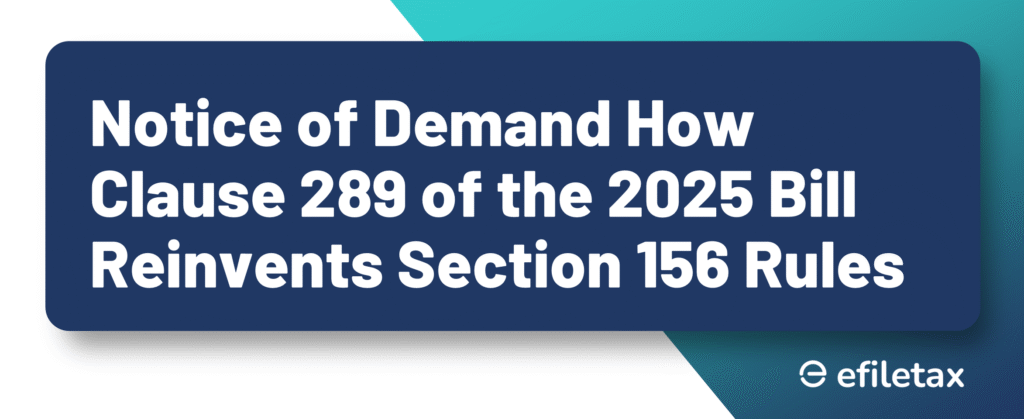
Introduction
Notice of Demand plays a key role in tax compliance. Under Indian tax law, it directs taxpayers to pay tax dues within a specified time. This blog compares Clause 289 of the Income Tax Bill, 2025 with Section 156 of the Income-tax Act, 1961, highlighting key changes every taxpayer and consultant should know.
What is a Notice of Demand?
- It is an official intimation from the Assessing Officer (AO).
- It specifies tax, penalty, or interest payable.
- It mandates payment within the time allowed — generally 30 days.
- Non-compliance may lead to penalty or recovery proceedings.
Legal Reference: Section 156, Income-tax Act, 1961; Clause 289, Income Tax Bill, 2025.
Clause 289 (2025 Bill): What’s New?
Clear structure:
- Sub-clause (1): AO shall serve a demand notice after assessment order.
- Sub-clause (2): Time limit for payment remains 30 days unless AO shortens it with recorded reasons.
- Sub-clause (3): Specifies digital delivery as valid service, aligning with faceless schemes.
Emphasis on E-service:
- Clarifies electronic communication is legally valid.
Alignment with faceless assessment:
- Direct link with Clause 258 (faceless assessment).
Expert View:
Efiletax experts recommend businesses monitor their tax portals frequently to avoid missing digital notices.
Comparison Table: Clause 289 vs. Section 156
| Aspect | Section 156 (1961 Act) | Clause 289 (2025 Bill) |
|---|---|---|
| Applicability | After any order creating tax liability | Same |
| Mode of Service | Physical & electronic | Explicitly mandates valid e-service |
| Payment Time Limit | 30 days (can be reduced) | Same, but must record reasons for reduction |
| Legal Consequence | Recovery & penalty on non-payment | Same, plus e-service strengthens enforcement |
| Faceless Link | Not integrated | Tied with faceless assessment provisions |
Key Takeaways for Taxpayers
- Check email & e-filing portal regularly.
Ignoring e-notices may result in penalties. - Maintain updated contact details in PAN records.
- Respond promptly to avoid recovery action.
FAQs on Notice of Demand
Q1: What happens if I don’t pay within 30 days?
Recovery proceedings start, including penalty and interest.
Q2: Can I appeal a demand notice?
Yes. You may file an appeal under the relevant sections but must pay the undisputed amount.
Q3: Is e-notice valid?
Yes. Both Section 156 and Clause 289 recognize electronic service as valid.
Summary
Notice of Demand under Clause 289 of the Income Tax Bill, 2025 clarifies e-service validity and aligns with faceless assessment. It retains the 30-day payment rule from Section 156 of the 1961 Act. Taxpayers must monitor portals to avoid penalties.
Conclusion
Stay updated with Efiletax for more practical insights on the Income Tax Bill 2025. Need help handling a demand notice or planning an appeal? Connect with our experts now for timely support.